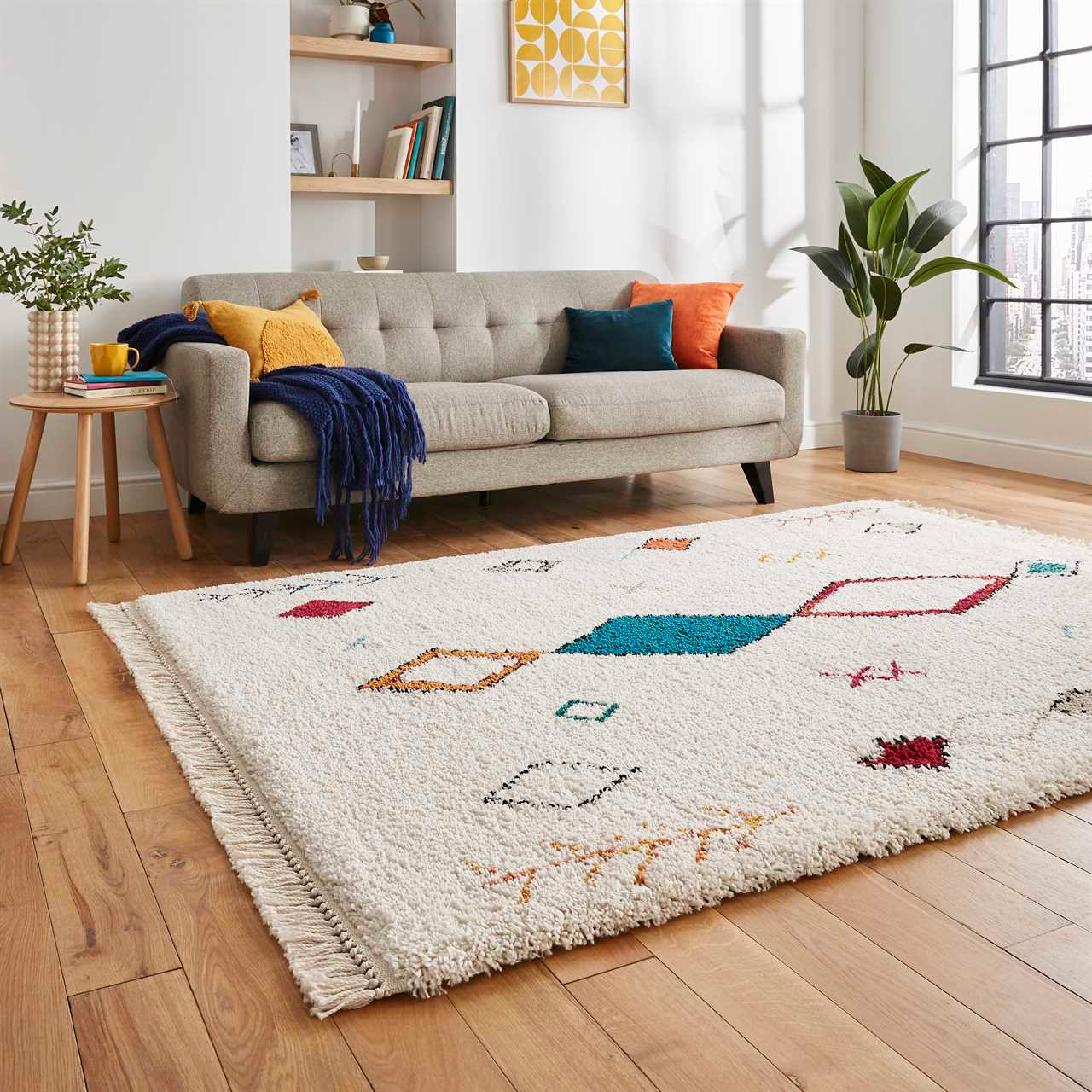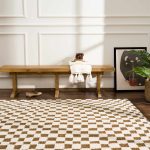Origins of Moroccan Checkered Rugs:
The origins of Moroccan checkered rugs can be traced back to ancient Berber tribes, who inhabited the region long before the arrival of Arab settlers. These nomadic tribes used hand-weaving techniques to create rugs that served as protection from the harsh desert climate. The geometric patterns, including the iconic checkered design, were not only aesthetically pleasing but also had symbolic meanings tied to nature, spirituality, and daily life.
Traditional Techniques and Materials:
Moroccan checkered rugs are predominantly handwoven using traditional techniques that have been passed down through generations. One of the most common methods is the flat-weave technique, also known as kilim, which involves tightly interweaving colorful wool threads to form the intricate patterns. The locally sourced wool, often from the sheep of the Atlas Mountains, is renowned for its softness, durability, and ability to retain vibrant dyes. Natural dyes derived from plants, minerals, and insects are used to achieve the distinctive hues seen in these rugs.
Symbolism and Meaning in Designs:
Each pattern found in Moroccan checkered rugs holds a deeper symbolism and meaning. Diamonds, zigzags, and crosses are commonly seen, representing protection against evil spirits, fertility, and blessings. The colors used in the rugs also convey symbolism; for instance, red symbolizes strength and protection, while blue represents wisdom and spirituality. These intricate designs tell stories and reflect the beliefs, values, and experiences of the weavers.
Cultural Significance and Functionality:
Beyond their aesthetic appeal, Moroccan checkered rugs play a vital role in Moroccan culture. They are not merely decorative pieces but serve practical functions as well. These rugs provide insulation during harsh winters and offer comfort while sitting or sleeping on the floor, a common practice in Moroccan households. Additionally, Moroccan checkered rugs are often used in traditional ceremonies, such as weddings, to symbolize good luck and prosperity.
Evolution and Contemporary Influence:
Over time, Moroccan checkered rugs have evolved to cater to changing tastes and market demands. While the traditional designs are still widely appreciated, contemporary variations with bolder colors and modern patterns have emerged. The popularity of these rugs has spread beyond Morocco’s borders, with interior designers and homeowners around the world embracing the unique charm and versatility they bring to different spaces.
Preserving the Craftsmanship:
Despite the increasing demand for Moroccan checkered rugs, the art of hand-weaving them faces challenges in the modern era. Industrialization and the availability of cheaper, mass-produced alternatives pose a threat to the traditional craftsmanship. However, efforts are being made to preserve this ancient art form. Artisans and organizations are working together to provide training, support local weavers, and promote sustainable practices to ensure the continuity of this cultural heritage.
Conclusion:
Moroccan checkered rugs are not just woven textiles; they encapsulate centuries of history, artistry, and cultural significance. Their intricate patterns, vibrant colors, and symbolic meanings reflect the diverse traditions and beliefs of the Moroccan people. As we continue to appreciate their enchanting beauty, it is crucial to recognize and support the artisans who carry on this ancient craft, ensuring that the story behind Moroccan checkered rug traditions endures for generations to come.


